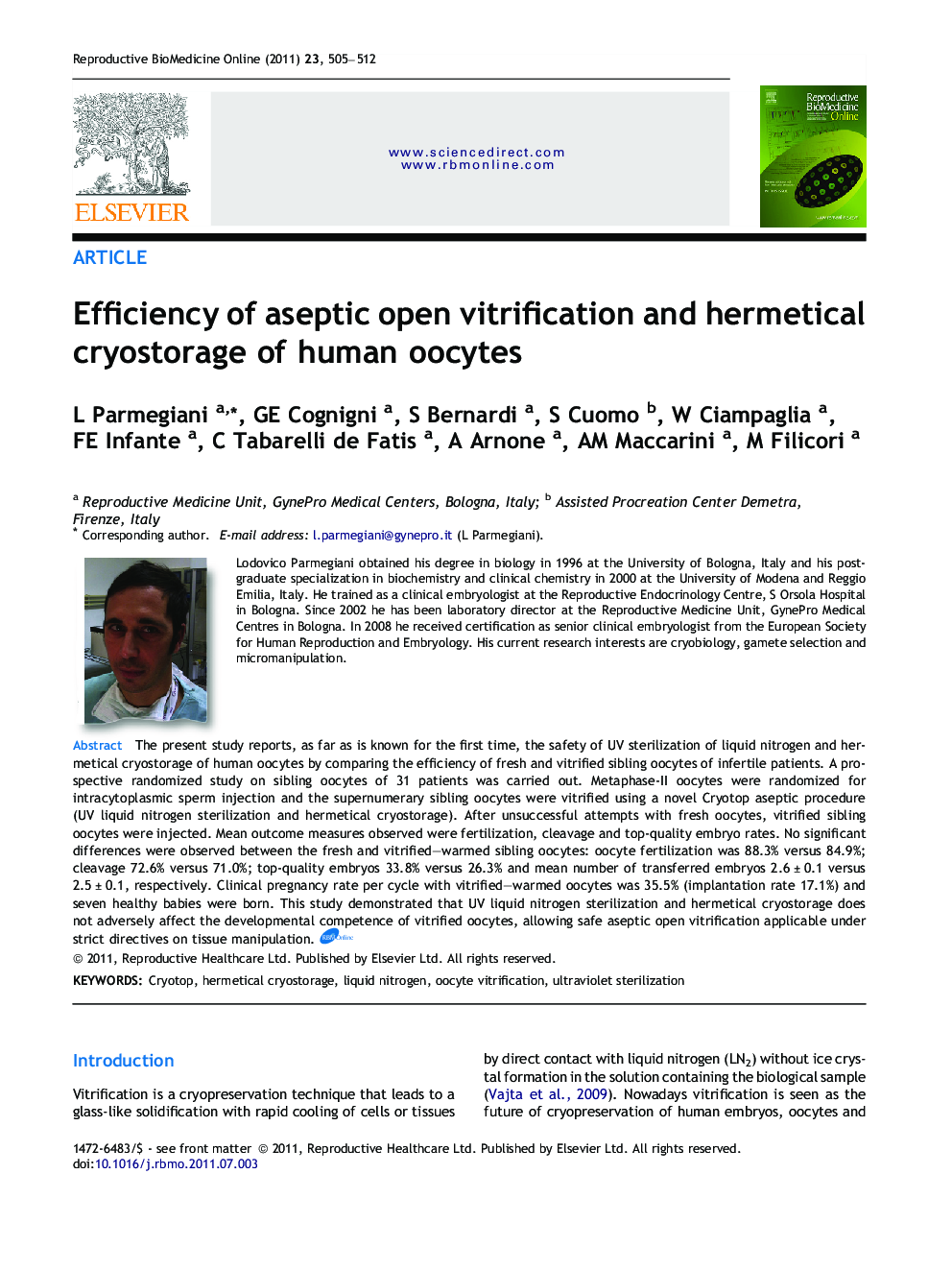| Article ID | Journal | Published Year | Pages | File Type |
|---|---|---|---|---|
| 3971133 | Reproductive BioMedicine Online | 2011 | 8 Pages |
The present study reports, as far as is known for the first time, the safety of UV sterilization of liquid nitrogen and hermetical cryostorage of human oocytes by comparing the efficiency of fresh and vitrified sibling oocytes of infertile patients. A prospective randomized study on sibling oocytes of 31 patients was carried out. Metaphase-II oocytes were randomized for intracytoplasmic sperm injection and the supernumerary sibling oocytes were vitrified using a novel Cryotop aseptic procedure (UV liquid nitrogen sterilization and hermetical cryostorage). After unsuccessful attempts with fresh oocytes, vitrified sibling oocytes were injected. Mean outcome measures observed were fertilization, cleavage and top-quality embryo rates. No significant differences were observed between the fresh and vitrified–warmed sibling oocytes: oocyte fertilization was 88.3% versus 84.9%; cleavage 72.6% versus 71.0%; top-quality embryos 33.8% versus 26.3% and mean number of transferred embryos 2.6 ± 0.1 versus 2.5 ± 0.1, respectively. Clinical pregnancy rate per cycle with vitrified–warmed oocytes was 35.5% (implantation rate 17.1%) and seven healthy babies were born. This study demonstrated that UV liquid nitrogen sterilization and hermetical cryostorage does not adversely affect the developmental competence of vitrified oocytes, allowing safe aseptic open vitrification applicable under strict directives on tissue manipulation.Human reproductive cell vitrification can be performed with specific open carriers, which show high efficiency especially with oocytes. In vitrification with open carriers, the risk of contamination of the culture medium at warming through contact between the cells and/or the outer surface of the carrier cannot be excluded if the LN2 used for vitrification/storage is accidentally contaminated. With these carriers, an aseptic vitrification can be performed by sterilizing LN2 for the vitrification procedure and subsequently cryostoring the carriers inside hermetical containers. With the present study, we report, as far as is known for the first time, the safety of ultraviolet LN2 sterilization and hermetical cryostorage of human oocytes by comparing the efficiency of fresh versus vitrified sibling oocytes of infertile patients. A prospective randomized study on intracytoplasmic sperm injection cycles with fresh or vitrified–warmed sibling oocytes of 31 infertile patients was carried out. Mature metaphase-II oocytes were randomized for ICSI; the supernumerary sibling oocytes were vitrified using a novel Cryotop aseptic procedure (sterilization and hermetical cryostorage). No significant differences in the main outcome measures were observed between the fresh and vitrified–warmed sibling oocytes. The clinical pregnancy rate per cycle with vitrified–warmed oocytes was 35.5% (implantation rate 17.1%); resulting in the birth of seven healthy babyes. This study demonstrated that ultraviolet LN2 sterilization and hermetical cryostorage does not adversely affect the developmental competence of vitrified oocytes, allowing a safe aseptic open vitrification applicable under strict directives on tissue manipulation.
